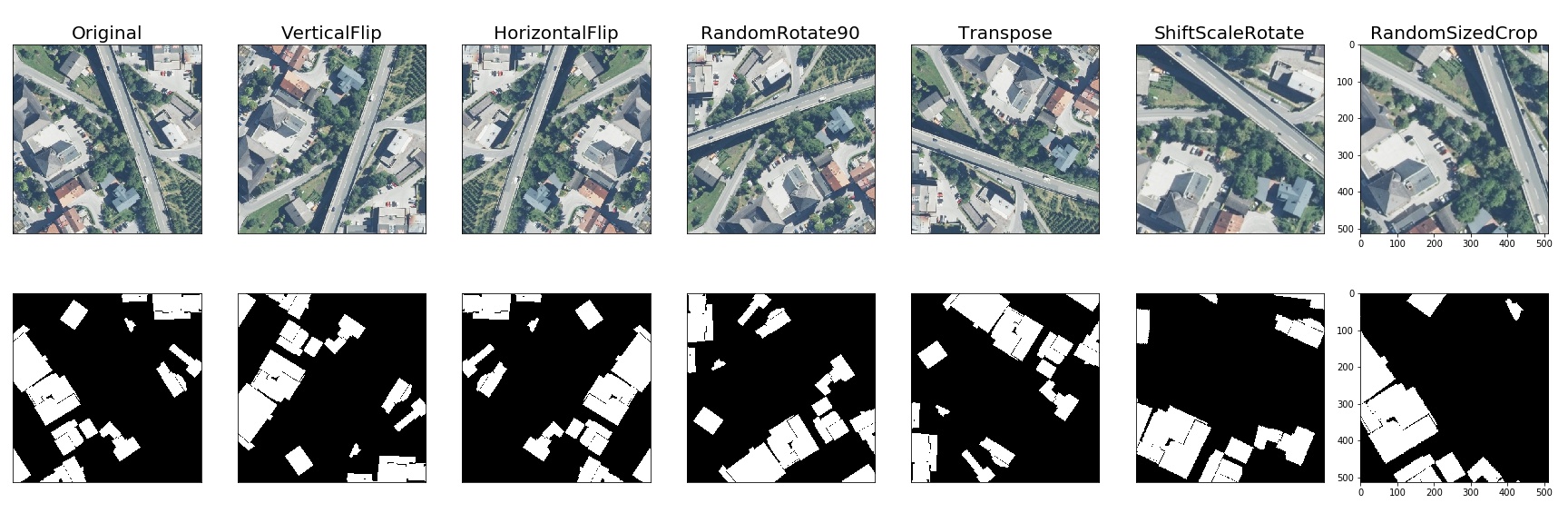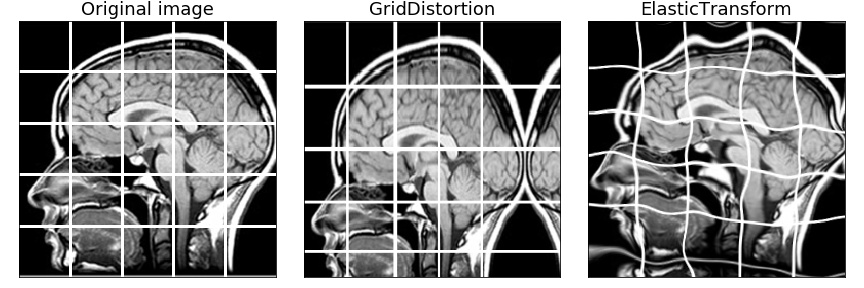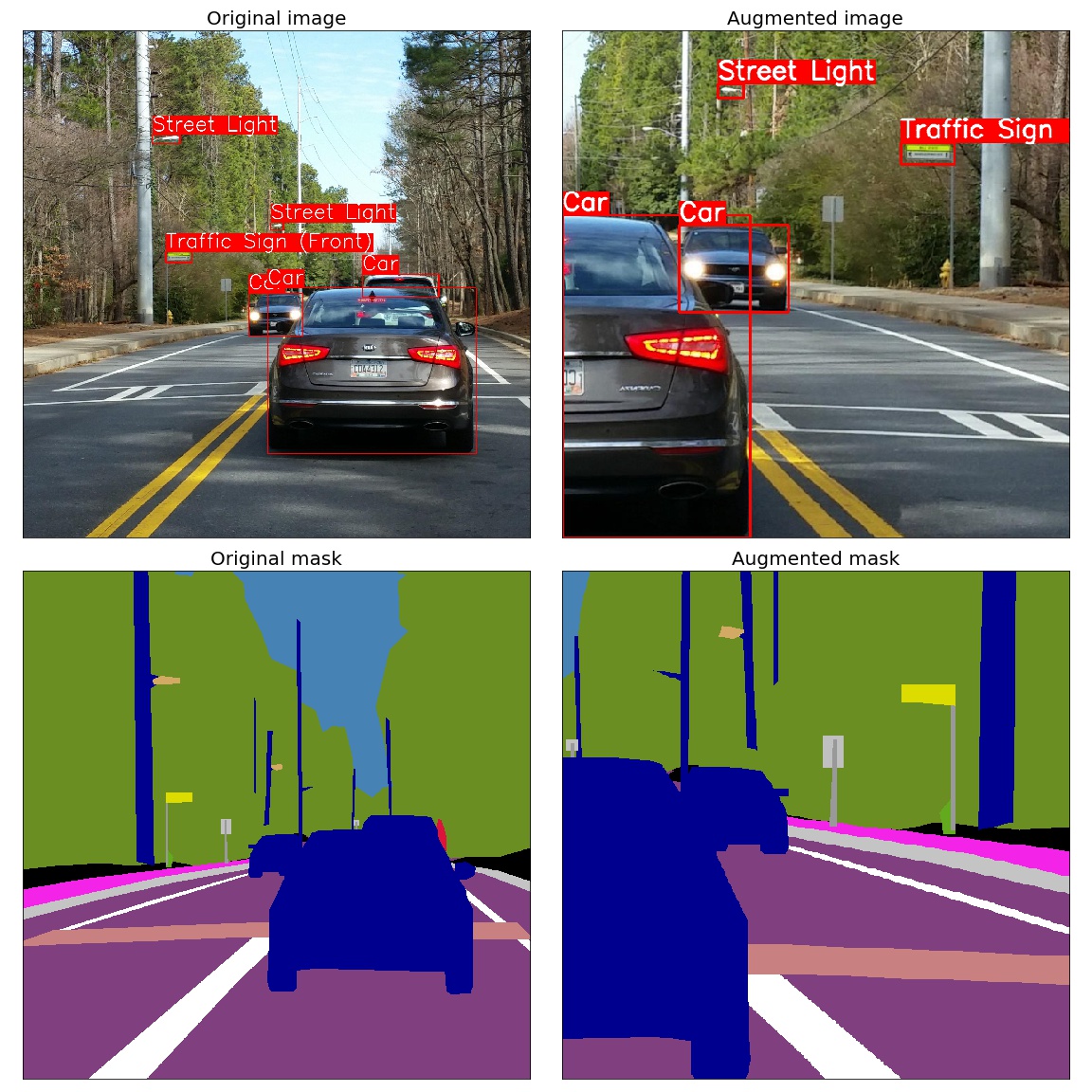Albumentations
- The library is faster than other libraries on most of the transformations.
- Based on numpy, OpenCV, imgaug picking the best from each of them.
- Simple, flexible API that allows the library to be used in any computer vision pipeline.
- Large, diverse set of transformations.
- Easy to extend the library to wrap around other libraries.
- Easy to extend to other tasks.
- Supports transformations on images, masks, key points and bounding boxes.
- Supports python 2.7-3.7
- Easy integration with PyTorch.
- Easy transfer from torchvision.
- Was used to get top results in many DL competitions at Kaggle, topcoder, CVPR, MICCAI.
- Written by Kaggle Masters.
How to use
All in one showcase notebook - showcase.ipynb
Classification - example.ipynb
Object detection - example_bboxes.ipynb
Non-8-bit images - example_16_bit_tiff.ipynb
Image segmentation example_kaggle_salt.ipynb
Custom tasks such as autoencoders, more then three channel images - refer to Compose class documentation to use additional_targets.
You can use this Google Colaboratory notebook to adjust image augmentation parameters and see the resulting images.
Authors
Installation
PyPI
You can use pip to install albumentations:
pip install albumentations
If you want to get the latest version of the code before it is released on PyPI you can install the library from GitHub:
pip install -U git+https://github.com/albu/albumentations
Conda
To install albumentations using conda we need first to install imgaug with pip
pip install imgaug
conda install albumentations -c albumentations
Documentation
The full documentation is available at albumentations.readthedocs.io.
Migrating from torchvision to albumentations
Migrating from torchvision to albumentations is simple - you just need to change a few lines of code.
Albumentations has equivalents for common torchvision transforms as well as plenty of transforms that are not presented in torchvision.
migrating_from_torchvision_to_albumentations.ipynb shows how one can migrate code from torchvision to albumentations.
Benchmarking results
To run the benchmark yourself follow the instructions in benchmark/README.md
Results for running the benchmark on first 2000 images from the ImageNet validation set using an Intel Core i7-7800X CPU. The table shows how many images per second can be processed on a single core, higher is better.
| albumentations 0.1.11 |
imgaug 0.2.6 |
torchvision (Pillow backend) 0.2.1 |
torchvision (Pillow-SIMD backend) 0.2.1 |
Keras 2.2.4 |
|
|---|---|---|---|---|---|
| RandomCrop64 | 740915 | - | 93057 | 97160 | - |
| PadToSize512 | 7484 | - | 789 | 782 | - |
| HorizontalFlip | 1093 | 982 | 6519 | 5923 | 1092 |
| VerticalFlip | 11097 | 5093 | 7908 | 8105 | 10834 |
| Rotate | 1076 | 802 | 124 | 206 | 37 |
| ShiftScaleRotate | 2188 | 1282 | 107 | 184 | 40 |
| Brightness | 775 | 888 | 426 | 562 | 199 |
| Contrast | 898 | 761 | 303 | 401 | - |
| BrightnessContrast | 692 | 412 | 173 | 229 | - |
| ShiftHSV | 219 | 148 | 57 | 74 | - |
| ShiftRGB | 736 | 889 | - | - | 668 |
| Gamma | 1215 | - | 1685 | 1671 | - |
| Grayscale | 2760 | 475 | 1182 | 1493 | - |
Python and library versions: Python 3.6.8 | Anaconda, numpy 1.15.4, pillow 5.4.1, pillow-simd 5.3.0.post0, opencv-python 4.0.0.21, scikit-image 0.14.2, scipy 1.2.0.
Contributing
- Clone the repository:
git clone git@github.com:albu/albumentations.git cd albumentations - Install the library in development mode:
pip install -e .[tests] - Run tests:
pytest - Run flake8 to perform PEP8 and PEP257 style checks and to check code for lint errors.
flake8
Building the documentation
- Go to
docs/directorycd docs - Install required libraries
pip install -r requirements.txt - Build html files
make html - Open
_build/html/index.htmlin browser.
Alternatively, you can start a web server that rebuilds the documentation
automatically when a change is detected by running make livehtml
Comments
In some systems, in the multiple GPU regime PyTorch may deadlock the DataLoader if OpenCV was compiled with OpenCL optimizations. Adding the following two lines before the library import may help. For more details pytorch/pytorch#1355
cv2.setNumThreads(0)
cv2.ocl.setUseOpenCL(False)Citing
If you find this library useful for your research, please consider citing:
@article{2018arXiv180906839B,
author = {A. Buslaev, A. Parinov, E. Khvedchenya, V.~I. Iglovikov and A.~A. Kalinin},
title = "{Albumentations: fast and flexible image augmentations}",
journal = {ArXiv e-prints},
eprint = {1809.06839},
year = 2018
}



